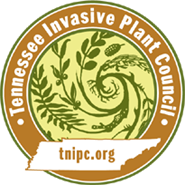Glechoma hederacea L.
Glechoma hederacea L.Creeping Charlie, Gill-over-the-ground, Ground Ivy
| Category |
|---|
| Vine |
|
Similar Species May be confused with the following native and/or non-native species. Landscape Alternatives lists native horticultural substitutes |
Lamium spp. |
|---|

Description
Height
Ground Ivy is a creeping, prostrate plant that roots along the ground. Flowering stems are erect and grow 2-8 in. (5-20 cm) tall.Stem
Slender, square (4-sided), trailing, sparsely pubescent stems root at the nodes and may reach to 3 feet (1 m) in length.Leaves
Leaves are opposite, 0.5-2 in. (1.5-5 cm) wide, green to purplish-green, pubescent and are round to heart- or kidney-shaped. Margins are scalloped and ciliate. Petioles on prostrate stems grow to 4 in. (10 cm) long. Petioles on flowering stems grow to 0.2-1.6 in. (0.5-4cm) long.Flowers
Inflorescences are terminal or axillary cymes with clusters of 2-7 flowers. Corollas are blue-violet with reddish-purple speckles and are bilaterally symmetrical, 0.4-0.8 in. (1-2 cm) long (or in pistillate plants only 0.3-0.6 in. (8-15 mm) long). The lower lip is larger, 3-lobed and bearded with club-shaped trichomes.Fruit
Mericarps are 0.05-0.08 in. (1.3-2 mm) long by 0.04 in (1 mm) wide, reddish brown, ovate, and smooth except for slight bumps at the apex. Nutlets are 0.04-0.08 in (1-2 mm) long, 0.04 in. (1 mm) wide, dark brown, flat on two sides and round on the third.Images
Photo: John D. Byrd, Mississippi State University, Bugwood.orgMore images of Glechoma hederacea
Life History
round Ivy (also called Gill-over-the-ground, Creeping Charlie, Haymaids, or Run-away-robin) is a creeping, perennial herb in the Lamiaceae (mint) family. It forms a dense ground cover that deters the establishment and growth of other species. Mostly a problem in lawns and cultivated areas, it can also form dense colonies in natural areas. Ground ivy is reported to cause colic, excessive salivation and sweating in livestock. Foliage emits a minty odor when mowed. Stems root at the nodes and stem fragments are the major source of spread. Stems root at the nodes and stem fragments are the major source of spread.Habitat
Ground Ivy is a perennial with creeping, square-sided stems that root at the nodes. Primarily a weed in lawns and maintained landscapes, ground-ivy prefers the moist ground and shade of floodplains, low woods and disturbed areas. It is widely established in North America and is common throughout the United States except for in the Southwest.Origin and Distribution
Ground Ivy, a native of Eurasia, was introduced as early as the 1800s likely as a medicinal plant. Traditional medicinal uses include: use of teas for lung ailments, asthma, jaundice, and kidney ailments; use of external rubs for cancer, backaches and bruises; and use of extracts for reduction of inflammation and edema. It is widespread throughout the United States and is banned in CT.Bibliography
Bryson, C.T. and M.S. DeFelice, eds. Weeds of the South. 2009. University of Georgia Press, Athens. 468 pp.Foster, S. and J.S. Duke. 2000. Perterson Field Guides: Eastern/Central Medician Plants and Herbs. Houghton Mifflin Company, New York. 411 pp.
Kaufman, S.R. and W. Kaufman. 2007. Invasive plants: guide to identification and the impacts and control of common North American Species. Stackpole Books, Mechanicsburg, PA. 458 pp.
Calhoun, R.N. and G.T Lyman. 2004. Ground ivy control for home lawns. Michigan State University Department of Crop and Soil Sciences. http://www.turf.msu.edu/ground-ivy-control-for-home-lawns (accessed January 2, 2011).
USDA, NRCS. 2011. The Plant Database, PLANTS profile for Gleochoma hederacea (ground ivy). National Plant Data Center, Baton Rouge, LA. http://plans.usda.gov. (accessed January 2, 2011).
Virginia Polytechnic Institute and State University. 2011. Virginia Tech weed identification guide: ground ivy: Glechoma hederacea. Department of Plant Pathology, Physiology, and Weed Science. Blacksburg, VA. http://ipm.ppws.vt.edu/scott/weedid/glehe.htm (accessed January 2, 2011).
Management Recommendations
Mechanical Controls
Small patches can be hand-pulled or raked in damp soil. Mowing when plants reach at least 3 inches (8 cm) tall has proven effective in some areas, but generally requires repeated mowing. Removal of shade, where possible, can stress ground ivy, which prefers cool shady sites.Herbicidal Controls
Foliar Spray Method: Products containing triclopyr have been proven to be highly effective in spring and fall. Apply a 2% solution of triclopyr and water plus a non-ionic surfactant, using a tank or backpack sprayer to thoroughly cover all leaves. Do not apply so heavily that herbicide drips off the leaf surface. Triclopyr should be applied to actively growing plants. Late September through early November seems to be optimal.NOTE: Triclopyr is a dicot-selective herbicide and should not harm monocots (grasses and similar species); however, use extra caution to avoid getting chemical spray on any non-target species. Be sure to refer to manufacturer’s label for specific information and restrictions regarding use.
